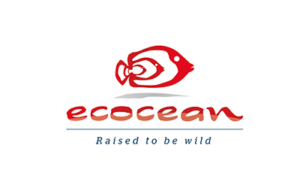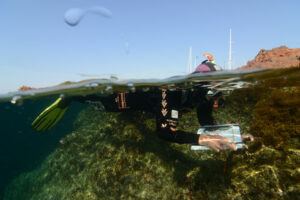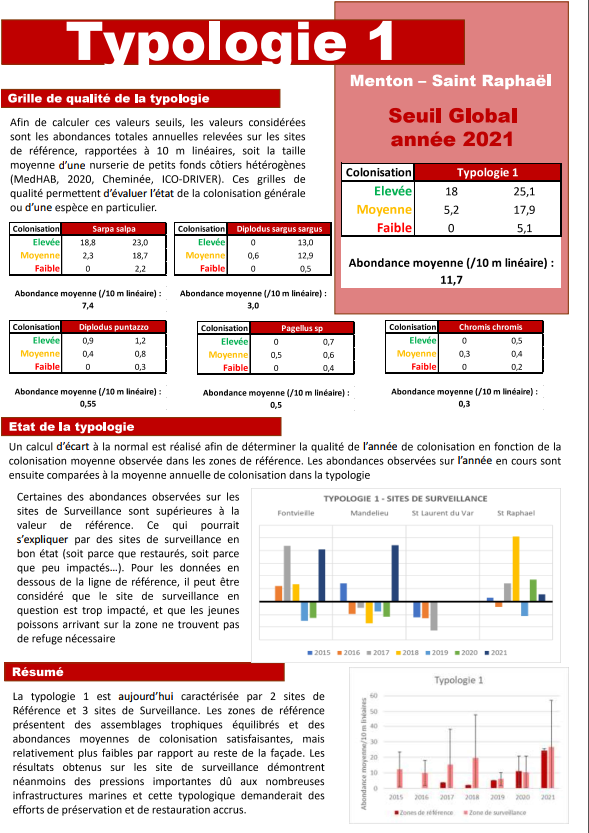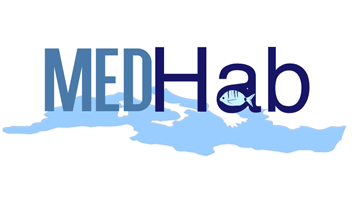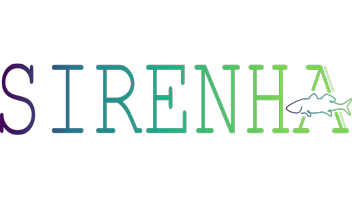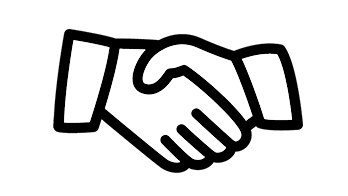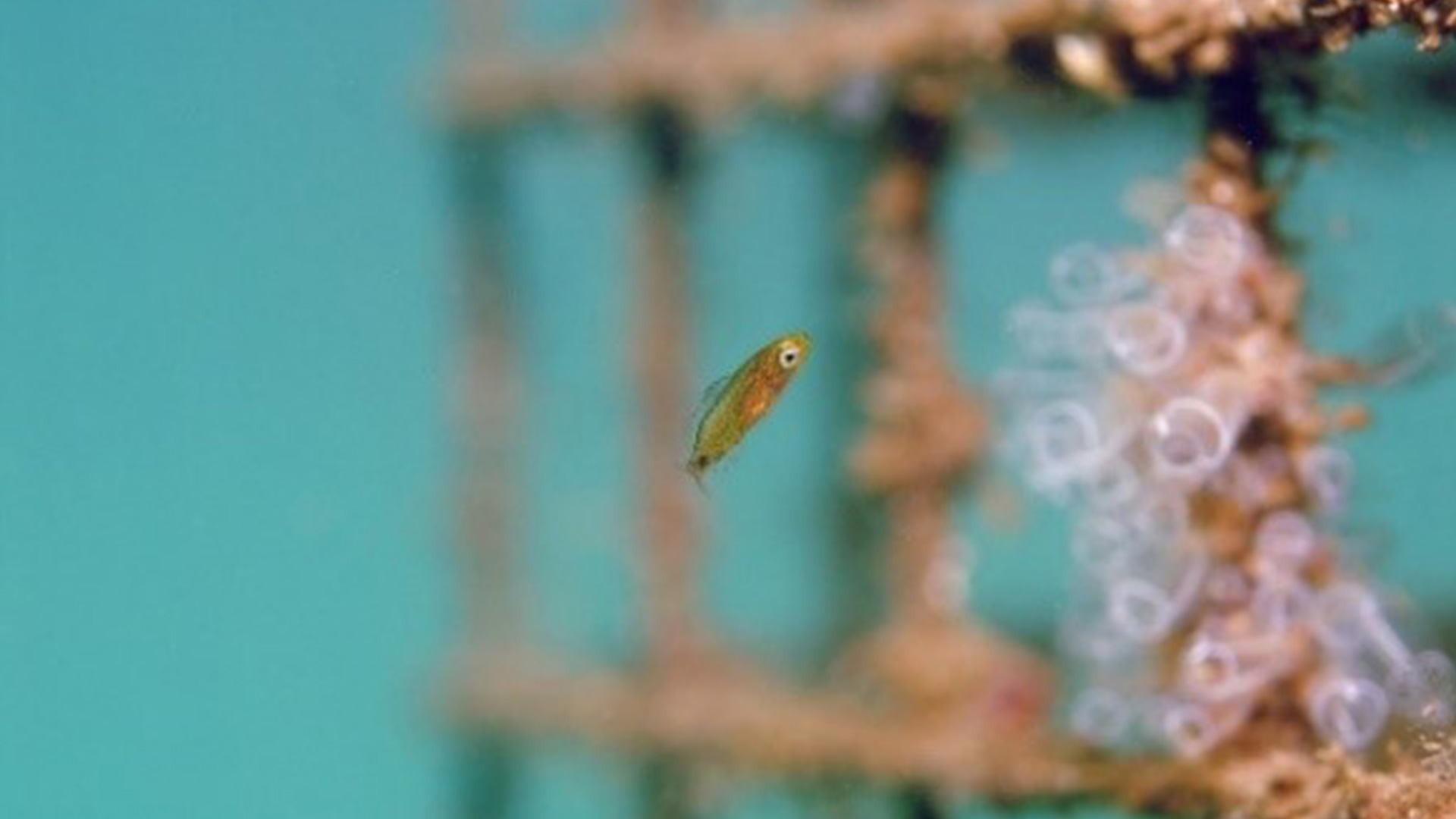
MONITORING OF LARVAL RECRUITMENT IN THE FRENCH MEDITERRANEAN
Based on the European Framework Directive “Strategy for the Marine Environment” (DCSMM), and its desire to achieve the “good ecological status” of all marine waters, the Rhone-Mediterranean-Corsica Water Agency (AERMC) has initiated, in collaboration with ECOCEAN, the RESPIRE monitoring network. Deployed with the aim of describing the spatio-temporal dynamics of the arrival of fish post-larvae on the coasts of the Mediterranean, this network was set up in 2014, and the first monitoring began in March 2015. 25 monitoring sites are now distributed along the entire French Mediterranean coast, in Corsica and Morocco. The counts are carried out on Standardized Observation Units installed in marinas (recognized in the literature as nursery areas), then on areas at the interface between the open environment and the nursery areas (dikes and riprap at the exit of the harbor) and on natural areas nearby.

D.puntazzo – Narbonne ©Remy Dubas
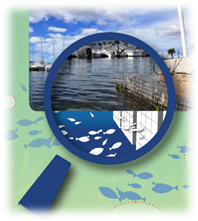
The RESPIRE network does not aim at an exhaustive assessment of juvenile fish assemblages but, like other monitoring schemes, allows for the most relevant representation of biological elements, postlarvae and juveniles of the year, an essential link in the renewal of natural populations whose ecology remains poorly known and is currently the subject of new and more in-depth research.
The first monitoring cycle, from 2015 to 2018, allowed for the adjustment of monitoring, both in terms of observation period and spatial distribution. Between 2018 and 2020, data were analyzed to propose initial thresholds for colonization quality.
Over the last five years, the objectives of the network have evolved (setting up monitoring protocols, the temporality of the counts, the choice of sites), but today they are mainly focused on establishing the status of the post-larval/juvenile populations that colonize the coast, by proposing quality thresholds. This is why, in order to take into account the different environmental criteria that can explain the larval recruitment of certain species in certain places, a monitoring typology was proposed in 2020.
The typologies allow to define and classify different geographical areas according to physical, chemical, geological and/or biological criteria, in which several sites can be considered as similar. The Water Framework Directive had already applied criteria recognized as forcing elements of marine life for the division of coastal water bodies. The WFD typology was therefore a working basis for developing the RESPIRE network typology, subject to the additional application of criteria specific to the colonization of post-larvae, such as
- Geomorphological criteria, with :
-
- Water renewal (Source DCE 2010)
- Depth (Source DCE 2010)
- The slope, i.e. the distance from the coast to the 50m isobath (Source : SHOM 2015) ;
- The most specific ecological criteria, with :
- The maximum temperature in summer in the water bodies (Source : Copernicus 2018) ;
- The majority coastal habitats of the water body up to the 20m isobath (Source : DONIA, 2019) ;
- And relatedly, habitat fragmentation down to the 20m isobath (Source : DONIA, 2019).
- Pressures that may primarily impact larval fish settlement with :
- Development impacts (Source : IMPACT, Andromeda 2016).
- Impacts of waterways (Source : IMPACT, Andromeda 2016)
These different criteria allowed us to obtain 7 typologies on the continental coast, completed by 5 typologies on the Corsican coast.
Once the typologies were defined, it was necessary to identify, for each of them, monitoring sites providing information, with :
- One Reference site per typology : this is a site considered as “without pressure”. The degree of pressure will be defined according to the typology, as some typologies will logically be more under pressure than others. This reference site will be a natural area, followed in transect.
- One or more monitoring sites, subject to more or less pressure or to different pressures, as well as to different rates of habitat fragmentation (representing different habitats in a typology). They are representative of the heterogeneity of the typology. As these monitoring sites are potentially located in developed areas, they are monitored by means of UOS installed in ports, and transects carried out on dikes or riprap.
Today, in 2021, there are 12 reference sites and 22 monitoring sites.
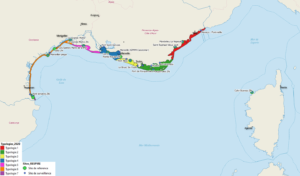
Typologies and monitoring sites of the RESPIRE project @Medtrix
These sites allow to inform the typologies, in particular with :
- Colonization quality grids by species (high, medium, low).
- A functioning of the typology according to the trophic guilds represented.
- Or, the state of colonization of the Monitoring sites compared to a natural state.
The compiled data are presented on the Medtrix platform, and synthesis documents, downloadable, such as these typology sheets evolving every year according to the annual analyses.
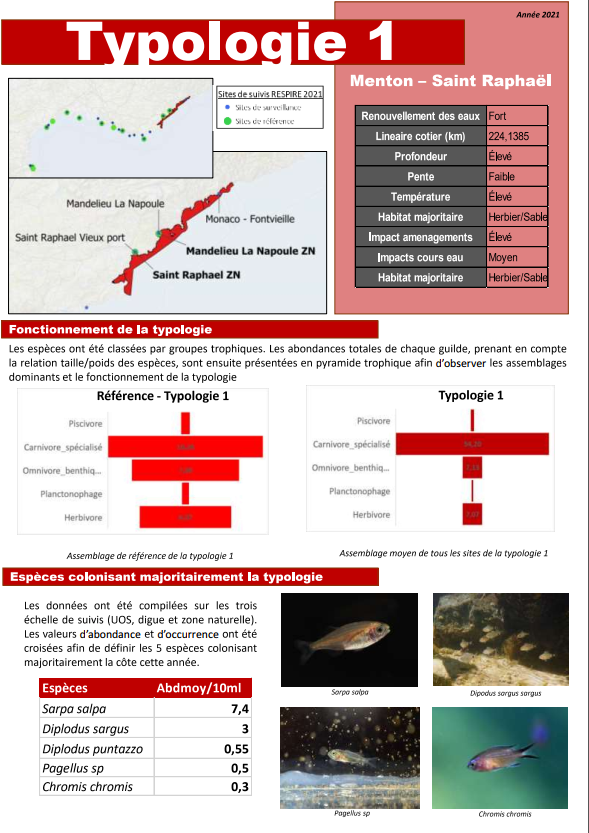
Example of a detailed sheet concerning the typologies, available on the Medtrix platform. Here the typology 1 @Medtrix.
You can access the project on the Medtrix platform, by clicking on the button “Access to maps” below. You will find, especially in the legend, small “i” that you can click on and that will direct you to the essential documents of this project. For the 2020 results, you will be able to access a POP UP Window with a summary of results by Typology. Illustrations are coming soon!
Contacts : Amélie FONTCUBERTA (amelie.fontcuberta@ecocean.fr) / Anais GUDEFIN (anais.gudefin@ecocean.fr)
Project Leader : Ecocean – https://www.ecocean.fr/
Update frequency : The update is done 3 times a year (March, June and October), just after the in situ monitoring
Current partners : Agence de l’eau Rhône Méditerranée et Corse, CEFREM, STARESO, University of Rabat (Historical : IFREMER, Aquapassion)
